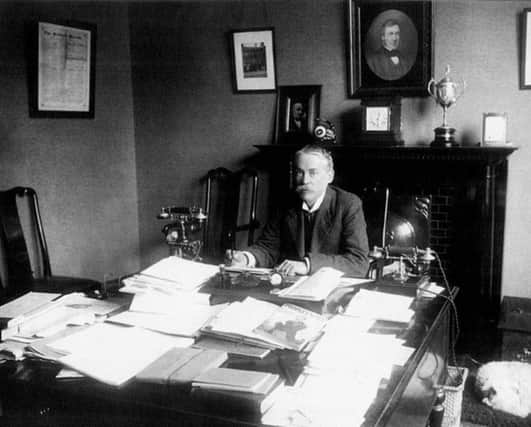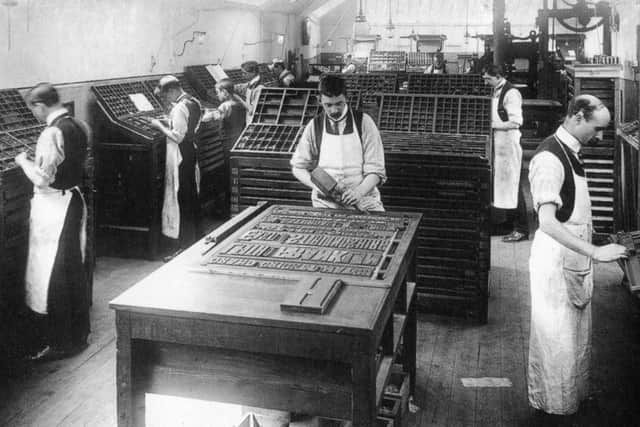The Falkirk Herald still making headlines!


If my arithmetic is correct that means that today’s edition is the 400th since then and therefore this is my 400th history article. Several other features created at the time have achieved the same milestone.
It is a great privilege to have a weekly opportunity to write about Falkirk’s rich history and, to mark the occasion, I want to recall the vital part played by the newspaper itself in reporting and therefore preserving the past since the first issue back in 1845.
Advertisement
Hide AdAdvertisement
Hide AdThe paper was the brainwave of Alexander Hedderwick, a Glasgow lawyer, but his interest lasted only a year before he sold the title to 21 year old Archibald Johnston who had inherited the family bookselling and printing business from his father Thomas.


Archibald switched production from Glasgow to Falkirk and a media dynasty was born.
In 1851 the paper moved from monthly production to weekly, then twice weekly, reaching the height of its power during the 50 year reign of Archibald’s famous son Fred Johnston who dominated the local newspaper world and much else in Falkirk.
Back in 1845 Falkirk was in a desperate state with ancient buildings huddled together in insanitary rows in unpaved and uncleaned streets.
Advertisement
Hide AdAdvertisement
Hide AdIn the overcrowded hovels of the Garrison and the Back Row cholera and typhus claimed many lives and the council seemed unable or unwilling to do anything about it.
Enter the fledgling Falkirk Herald to take up the battle against the incompetent stentmasters and the hereditary feuars.
Who were these people who refused to act? What was being done behind closed doors?
For the first time the people read about the causes of their plight and the consequences of inactivity.
Advertisement
Hide AdAdvertisement
Hide AdIn August 1859 Parliament passed the necessary legislation and modern Falkirk was born.
A few years later came the acrimonious fight over a new water supply.
No commodity was more important and Falkirk’s expanding population needed four times the available supply.
Schemes came and went and councils did the same. The paper demanded action.
Advertisement
Hide AdAdvertisement
Hide AdThe first proposal to extend the inadequate pit water supply was “the cheapest, the nastiest and the worst scheme”.
The next, involving Loch Coulter brought huge losses. “The money,” said the Herald, “might as well have been flung in the sea or in Loch Coulter”.
Eventually the pressure brought success and in 1891 the reporters described the joyous scenes as water from the Denny Hills reached the town.
Another campaign which started in the letters column produced Falkirk’s first little cottage hospital in Thornhill Road which opened its doors in July 1889 and the outbreak of war in August 1914 unleashed a tide of patriotic fervour with the Falkirk Herald playing a large part in ensuring the recruitment message was always to the fore
Advertisement
Hide AdAdvertisement
Hide AdWhen the pit disaster at Redding claimed the lives of 40 miners in September 1923, the paper organised a great appeal which, within a year, had raised an amazing £63,000.
And, as I described last week, when the aviation age arrived in July 1939 at Grangemouth, the world’s most advanced passenger plane a Douglas DC3, paid a visit.
Up in the air went the brave man from the Falkirk Herald in a demonstration flight over the Forth Bridge. “Sensational” was his breathless verdict in the next edition!
And there has been so much more in the years that followed.
In whatever form, the paper remains the heart of the community.